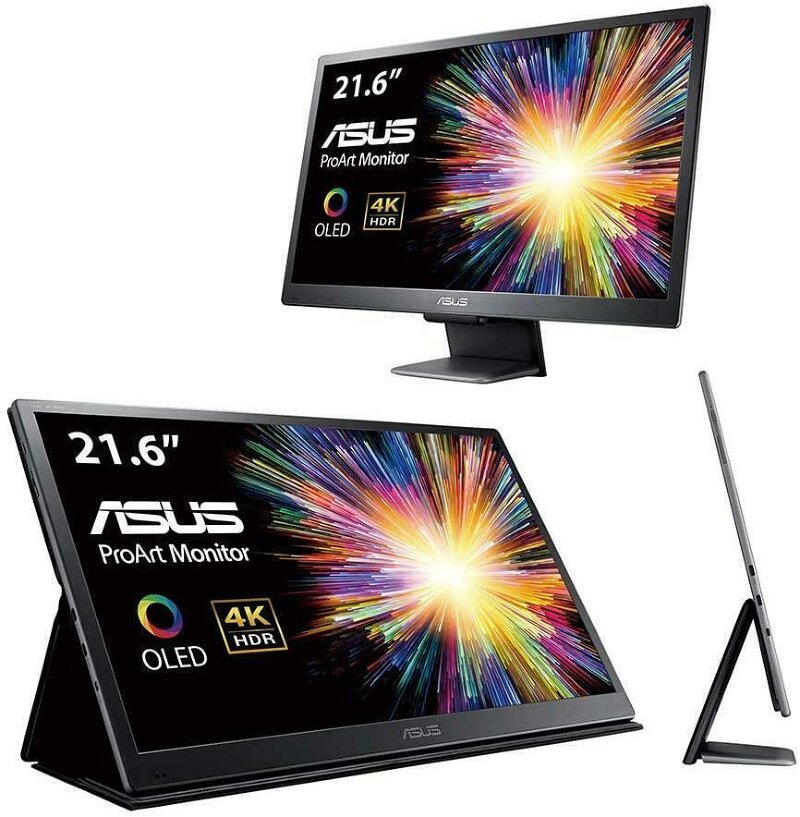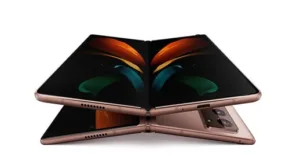The Display Week 2020 conference was conducted virtually for the first time from August 3rd to August 7th and the online conference continues to be open until Dec 7th 2020. With 180+ virtual exhibitors, seminars, symposiums, I-Zones and the SID/DSCC Business Conference, it gave a glimpse into the future of display in terms of market and technology.

Display Market Outlook: Brighter for 2021
The Business Conference, organized in conjunction with DSCC, the provided display market outlook from analysts as well as executives from panel suppliers, brands, and equipment/material suppliers. According to DSCC’s presentation, Covid 19 came when there was over-supply in large area and small/medium display market: panel prices were at a record low, panel suppliers had not made money for nine straight quarters and Korean suppliers are transitioning from LCD to OLED.
The impact of work-from-home and learn-from-home resulted in strong demand for tablets, notebooks and monitors. Even TV demand has recovered resulting in panel price increases. Mobile phones and auto displays are continuing to face negative demand growth rates. The global market is expected to be more display-centric after the Pandemic, leading to faster recovery. DSCC is forecasting a brighter outlook for display revenues in 2021. OLED will have higher equipment spending compared to LCD in 2020 and in future years. OLED displays will continue to gain market share from LCD. The Foldable OLED smartphone market is still developing. Demand is mostly focused on clamshell designs due to lower cost and less risk of damage. The Samsung Z flip is the most popular with robust design using ultrathin glass from Schott. High prices, ultrathin glass capacity constraints and still evolving form factors are limiting adoption rates for foldable smartphones.
Samsung’s Z Fold 2
OLED: Increasing Shares and Evolving Technology
OLED display with its superior performance and increasing share is still facing many challenges in terms of manufacturing complexities, yield, lifetime, efficiency of blue materials, power consumption and other issues. Display Week 2020 had many presentations from the global display industry, about technology development to resolve these issues. The smartphone market is expected to recover in 2021 boosted by 5G adoption. Flexible OLED displays are preferred for 5G products. Technology development is still needed to improve efficiency and lower power consumption.
- Cathode Patterning Material
As the smartphone market is shifting towards larger screen sizes, foldable displays and 5G, there is a greater need for lower power consumption and smaller battery size. OTI Lumionics showed how a patterned cathode in the OLED stack can enable high transparency ( for under display cameras & AR), higher brightness (mobile & automotive), low power consumption (5G & foldable), and larger size panels (foldable & QD-OLED). Their materials for cathode patterning are produced by PPG and have been qualified by multiple panel makers up to 6G lines. AMOLED modules with their products are being qualified with Tier 1 device makers and are expected to ship in 2021. The company said that their technology is enabling multiple customer applications: under display camera and face unlock, transparent display for AR, longer battery life and higher brightness for mobile, and larger size panels for foldable and QDOLED. Panel suppliers are currently pursuing different options for under-display camera and lower power consumptions. (more about this topic shortly – editor)
- Blue Material Development
High efficiency of blue OLED material is getting to be crucial to enable substantial power savings for mobile and IT products and enable high performance QD-OLED panel resulting in lower costs and higher resolution products. Companies such as UDC (Phosphorescence), Cynora (TADF), and Kyulux (Hyperfluorescence) are working towards developing the desired color, efficiency and lifetime. While there is progress it is not clear when it will be available. Current use of fluorescence material includes a deep blue color but with low efficiency. A paper from Samsung Display discussed how blue phosphorescent color purity and efficiency could be improved.
- LTPO Technology
There were several interesting papers about LTPO by companies including Sharp and Royole. This technology is a combination of LTPS + Oxide TFT technology that enables variable refresh rates and low power consumption. LTPS has high carrier mobility and high driving capability whereas Oxide TFT has low leakage. It will enable a broad range of display applications with low standby power and high refresh rates. Apple the was first to use it in the Apple watch. Many companies are working on this technology for next generation displays. Samsung has already announced a Galaxy smartphone with variable refresh rates for 5G products resulting in lower power consumption. Samsung’s Z fold 2 product has the first LTPO foldable display.
Ink Jet Printing: Starting Production
Ink Jet Printing (IJP) for advanced displays such as OLEDs has been investigated for more than 15 to 20 years. Printing technology has the advantage in terms of scalability of mother glass, and high efficiency in material utilization. It is already being used successfully for OLED thin film encapsulation (TFE) enabling flexible and foldable display. IJP for RGB OLED printing has been challenging due to material issues and manufacturing complexities. JOLED is the only supplier up to now to use IJP (Sumitomo polymer materials & Panasonic IJ printer) to commercialize 21. 6-inch,4K RGB OLED mid-size displays (currently used by Asus and Eizo as monitors). JOLED is also planning to produce 27-inch and 32-inch 4K OLED LTPS panels. It has also shown prototype of a printed 12-inch FHD flexible OLED sheet.
Increasing the substrate size of IJP can contribute to reduction in production costs. It is difficult to use LTPS TFT for larger lower cost displays. Oxide TFTs can be used for 8.5 G to 11G fab for printed OLED. RGB printing plus oxide TFTs can potentially contribute to high productivity in OLED display manufacturing. A printing method is required for RGB OLED TV panels for a top emission structure, as the Fine Metal Mask (FMM) method can’t be used. There are several advantages to printing including process simplification, investment and material cost reduction, smaller clean room space and a more environmentally friendly process. It will be also very valuable for next gen displays such as QDOLED, QNED, EL-QD and RGB OLED TV. CSOT/TCL invested $187 million in JOLED to scale up IJP technology for large size RGB IJP TV. DSCC forecasts that CSOT’s RGB IJP OLED 8.5 Gen fab’s mass production will start in 2024. IJP prototype printers have been shown scaled to Gen 8 sizes by various equipment makers including TEL, Kateeva and SEMES.

QLED, QDOLED, QNED: Entering The Expansion phase
Samsung Electronics has been focusing on QLED (QDEF LCD) TV. According to Nanosys’s presentation, the QD TV model proliferation rate is nearly double that of OLED TV resulting in more choices for consumers. QD TV set prices have reached below $1K enabling higher adoption and stronger growth rates. According to the DSCC’s Inkjet Printing presentation, Samsung Display is converting an 8.5 Gen LCD fab to QDOLED.
Samsung Display plans to invest $11 billion in next generation displays, which will include QDOLED and QNED. Samsung will convert 120K substrates/month of a-Si LCD capacity to 30K substrates/m QDOLED capacity in the first phase. Eventually Samsung Display plans 8.5 gen capacity to be converted to 100K/m QDOLED capacity. QNED is currently in the R&D phase and will progress to pilot line in 2021 if successful. According to the presentation, it is possible thatthe QDOLED process line planned for the future may be converted to QNED where blue OLED will be replaced by Nanorod LED. Both Nanorods and QDCC (QD Color Convertor) can be deposited by IJP. Although advances are being made in EL-QD, its commercialization is beyond several years. EL-QD has advantages over OLED including high brightness, low power consumption, wider color gamut and potentially lower costs. EL-QD material performance still can be a challenge, and others include the lifetime of Cd-free EL-QD, Blue EL-QD, ink formulations and yield.
MiniLED, MIcroLED: Bringing competition to OLED in future
Mature LCD technology still continues to improve with the help of dual cell LCDs, miniLED backlights and QD technology improving contrast ratio, color gamut, luminance and HDR performance. Companies such as BOE and CSOT/TCL are focusing on dual cell LCD for TV. MiniLED backlights offer thinner backlight structure, high-density dimming zones and low halo effect for better HDR. A large number of zones can reduce the halo effect. Market for miniLED backlights is increasing for TV, automotive, monitor and notebook applications. MiniLED backlights outperform OLED in terms of brightness, image sticking, lifetime and narrow borders.
MiniLED-based LCD products have the potential to offer competition to OLED especially if cost can be reduced.
At Display Week, many companies presented papers focused on improving transfer, inspection and manufacturing technology for MicroLED. VueReal presented their printing process where MicroLEDs are printed directly from a cartridge to a display substrate selectively, and scalable to high volume production. It has multi cartridge transfer and multi color cartridges compatible for TV. V Technology presented prototype systems and processes of laser lift off (LLO), mass transfer, electric bonding and color conversion layer. MicroLED-based displays have emerged as leading display solution to bring AR/MR glasses to the market due to their power efficiency and simple optics. Rohinni (with a joint venture with BOE) presented how to achieve high volume manufacturing. MicroLED is considered to be the next generation technology and making steady progress towards commercialization.
Display Week conference has always been the place to get a glimpse of future technology. It continues to deliver that even in a virtual setting. (SD)
Sweta Dash is the founding president of Dash-Insights, a market research and consulting company specializing in the display industry. For more information, contact [email protected] or visit www.dash-insights.com

